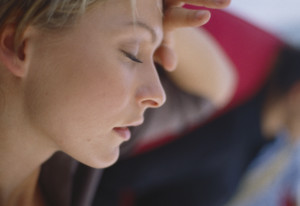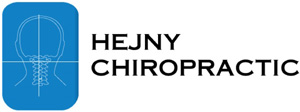 Due to a popular film of the same name, vertigo is often confused with the fear of high places. What really is vertigo and what can be done for it? These are some of the questions we will be addressing in this article.
Due to a popular film of the same name, vertigo is often confused with the fear of high places. What really is vertigo and what can be done for it? These are some of the questions we will be addressing in this article.
Table of Contents
What is Vertigo?
Vertigo is a medical condition causing you to feel as if the objects around you or you yourself are moving, when there is, in fact, no movement at all. People suffering from this condition often describe it as a spinning or swaying feeling. Along with this spinning sensation, vertigo is often accompanied by:
- Nausea and vomiting
- Problems walking
- Sweating
Vertigo most often occurs with head movement and is the most common form of dizziness. Those over the age of 40 experience this more often than any other age range. As many as 40% of these people cope with the feelings of dizziness caused by spinning. It affects women 2 to 3 times more often than men. Some have what is called a drop attack – an episode that hits so suddenly it causes you to become off balance and fall as a result. Vertigo is a condition that affects the vestibular system – the system of the body controlling your balance.
Some conditions resulting in vertigo are:
- BPPV – benign paroxysmal positional vertigo
- Labyrinthitis
- Meniere’s disease
- Stroke
- Multiple sclerosis
- Tumors of the brain
- Trauma to the head or neck
- Brain injury
- Migraines
- Uneven pressures between the middle ears

What’s Behind the Onset of Vertigo?
It is interesting to note that some of the above-mentioned reasons for vertigo – such as trauma to the head or neck, brain injury, uneven pressure in the ears, and more – can all be linked to a problem with the bones of the upper cervical spine. This was proven by a recent study observing 139 patients who were diagnosed with Meniere’s disease and trying to cope with spinning because of it. Each of these patients was asked to fill out a detailed patient history, and it was discovered that all of them had a previous whiplash-type injury. In addition, they had not been experiencing any problems before they endured this type of trauma. The majority of these patients had been in some type of car accident.
Each of these people was administered care from an upper cervical chiropractor. This care was tailored to each one of them individually according to where their misalignment was located. The astonishing results were that many of them saw immediate relief from vertigo after just one adjustment! At the beginning of their care, they were asked to rate the intensity of their vertigo on a scale of 1 – 10, with 10 being the most severe. They rated their dizziness at an average of 8.5. In reevaluating them after two years of upper cervical care, they rated their vertigo intensity at an average of 1.4. These are exciting results if you or someone you know suffers from spinning.
Another case study was completed of a 37-year-old woman who was suffering from vertigo that began after a fall down the stairs. She sought the care of an upper cervical chiropractor, and after just one adjustment, she reported having total relief from her vertigo symptoms.
Why Does Upper Cervical Chiropractic Care Help Vertigo?
Upper cervical chiropractic care is a little-known chiropractic procedure that is gaining much popularity. It has to do with correcting the position of the uppermost vertebrae of the spine – the atlas (C1) and axis (C2). If either of these bones is out of alignment by just a ¼ of a millimeter, it can cause a number of different medical conditions, including vertigo. Therefore, by correcting the tilt or shift of these bones, a number of health problems may clear up. The atlas weighs only 2 ounces and is circular in shape. Trillions of nerves and nerve fibers connected to the brainstem, travel through the small center opening of the atlas, and run down the spinal column. Due to the smallness of the opening and the closeness of the atlas to the brainstem, it makes sense that a misalignment here – even a small one – can result in problems in the body.
One problem that ensues has to do with signals being sent to and from the brain and body becoming distorted. This means that every tissue, organ, and cell that relies on these messages will suffer and degenerate. You can compare this to wrapping a rubber band around your finger too tightly (similar to the atlas restricting the spinal cord). Eventually, your finger will turn blue and begin to ache. The problem is not with your finger, but with the rubber band. Adjust the rubber band and your finger gets better. Similarly, adjusting the atlas can bring relief to numerous health problems, including vertigo. If the brain is getting the improper signal that the body is in a different location than it is in, vertigo can ensue.
What to Expect When Visiting Our Office
We use a gentle method that does not require us to pop or crack the spine or neck. Rather, we encourage the bones to move back into place more naturally, resulting in a longer-lasting adjustment. Once the atlas is moved back into its proper position, communication, nerve flow, and blood flow can all be restored to the brain. As shown in the above studies, this often results in improvement in or resolution of vertigo in only a few visits.
To schedule a complimentary consultation with Dr. Hejny, call our Spring Lake Park office at 763-230-0116. You can also click the button below.
 If you are outside of the local area, you can find an Upper Cervical Doctor near you at www.uppercervicalawareness.com.
If you are outside of the local area, you can find an Upper Cervical Doctor near you at www.uppercervicalawareness.com.
